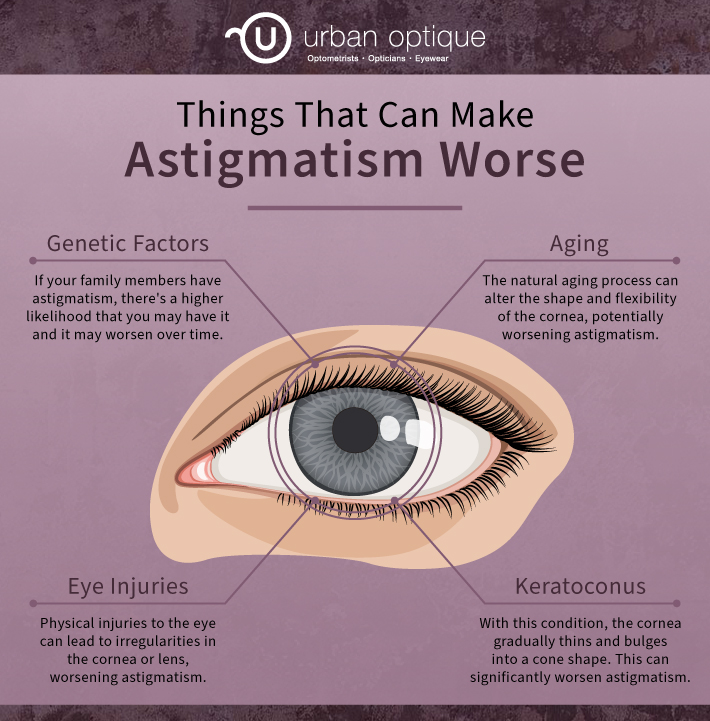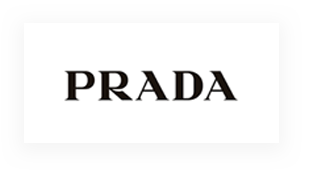Astigmatism is a common eye condition that affects many people. It occurs when the cornea or lens of the eye is irregularly shaped, leading to blurred or distorted vision, and it often occurs alongside other refractive errors, such as myopia.
While many people live comfortably with mild astigmatism, there are certain things that can cause it to worsen. Genetic factors, aging, eye injuries or trauma, and corneal conditions like keratoconus can all make astigmatism worse. The good news is that there are also treatment options and preventive measures to help reduce the risk of it worsening.
Understanding Astigmatism
Astigmatism is a refractive error, much like nearsightedness or farsightedness. Instead of focusing light evenly on the retina, an irregularly curved cornea or lens can cause images to blur. This condition can occur alone or in conjunction with other vision problems.
Types of Astigmatism
Astigmatism can be classified into 3 types: regular astigmatism, irregular astigmatism, and mixed astigmatism.
- Regular Astigmatism: This is the most common type, often characterized by a consistent curvature of the cornea or lens. Regular astigmatism can generally be corrected easily with glasses, contact lenses, or refractive surgery.
- Irregular Astigmatism: This type occurs when the cornea has an inconsistent shape, often due to conditions like keratoconus or scars from injuries. Irregular astigmatism can be more challenging to correct since standard lenses may not provide adequate clarity. Specialized lenses or surgical procedures may be recommended instead.
- Mixed Astigmatism: This type involves both regular and irregular astigmatism, where 1 meridian is myopic (nearsighted) and another is hyperopic (farsighted). Managing mixed astigmatism can involve a combination of corrective lenses, specialized optics, or surgical options.
What Causes Astigmatism to Develop & Worsen?
Understanding the factors that contribute to the worsening of astigmatism is crucial for those affected by this condition. By identifying the conditions and habits that may exacerbate your symptoms, you can take proactive steps to manage your eye health.
Genetic Factors
Genetics play a significant role in eye health, including the development and progression of astigmatism. Kids with parents or siblings who have astigmatism may also have a higher likelihood of developing astigmatism.
Aging
As we age, our bodies change—and so do our eyes. The natural aging process can alter the shape and flexibility of the cornea, potentially worsening astigmatism. Regular eye exams are important for monitoring these changes and adjusting corrective measures.
Eye Injuries & Trauma
Physical injuries to the eye can lead to irregularities in the cornea or lens, exacerbating astigmatism. Even seemingly minor injuries can have long-term effects, so protecting your eyes from harm is essential.
Corneal Conditions
Some individuals may develop conditions like keratoconus, where the cornea gradually thins and bulges into a cone shape. This can significantly worsen astigmatism, so early detection and treatment are important.
How Astigmatism Affects Long-Term Eye Health
Uncorrected astigmatism can lead to chronic eye strain, which may result in headaches and fatigue, especially during activities that require prolonged focus, such as reading or using digital devices. Over time, this strain can contribute to a decline in overall well-being.
People with significant astigmatism may be at a higher risk for developing associated conditions, such as amblyopia (lazy eye) or strabismus (crossed eyes), particularly in childhood.
Diagnosing Astigmatism
Astigmatism can often be diagnosed early in children. Parents who are aware of the signs of astigmatism can seek early medical intervention, potentially preventing the condition from affecting their child’s quality of life. Regular pediatric eye exams are important for catching astigmatism early and getting started with timely intervention.
Treatments for Astigmatism
Glasses & Contact Lenses: For many, wearing glasses or contact lenses is an effective way to correct astigmatism and improve vision. These options are adjustable over time to accommodate any changes in the condition.
Surgical Options: In cases where astigmatism is severe, surgical options like LASIK or PRK can reshape the cornea, offering a more permanent solution. We can help you determine if surgery is the right choice for you.
Lifestyle Changes for Eye Health: Simple lifestyle changes can support overall eye health and potentially slow the progression of astigmatism. These include:
- Using proper lighting when reading or working
- Taking regular breaks from screens
- Eating a balanced diet rich in vitamins A, C, and E
- Avoiding rubbing your eyes

Be Proactive About Astigmatism
While it is possible for astigmatism to get worse, being proactive about your eye health can make a significant difference. By visiting your eye doctor for regular checkups, taking note of any changes in your vision, and being aware of the factors that can make it worse, you can live comfortably with astigmatism. At Urban Optique, our team is here to provide treatment options and visual tools to help you see clearly and comfortably, regardless of your refractive errors. Come see us for an eye exam and let us help protect your visual health and comfort.
















